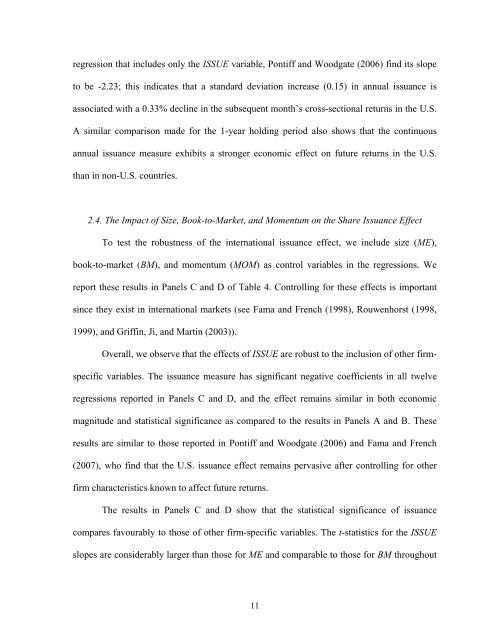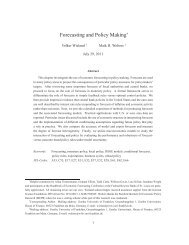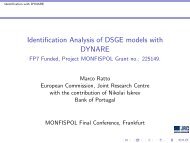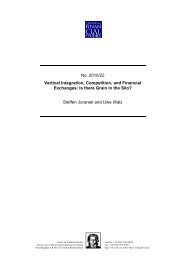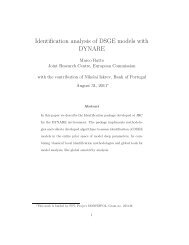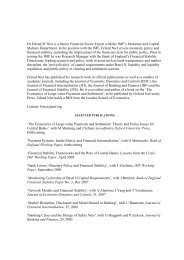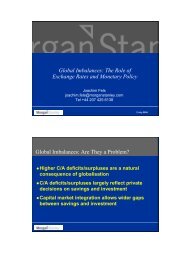r. david mclean, jeffrey pontiff and akiko watanabe - Center for ...
r. david mclean, jeffrey pontiff and akiko watanabe - Center for ...
r. david mclean, jeffrey pontiff and akiko watanabe - Center for ...
You also want an ePaper? Increase the reach of your titles
YUMPU automatically turns print PDFs into web optimized ePapers that Google loves.
egression that includes only the ISSUE variable, Pontiff <strong>and</strong> Woodgate (2006) find its slope<br />
to be -2.23; this indicates that a st<strong>and</strong>ard deviation increase (0.15) in annual issuance is<br />
associated with a 0.33% decline in the subsequent month’s cross-sectional returns in the U.S.<br />
A similar comparison made <strong>for</strong> the 1-year holding period also shows that the continuous<br />
annual issuance measure exhibits a stronger economic effect on future returns in the U.S.<br />
than in non-U.S. countries.<br />
2.4. The Impact of Size, Book-to-Market, <strong>and</strong> Momentum on the Share Issuance Effect<br />
To test the robustness of the international issuance effect, we include size (ME),<br />
book-to-market (BM), <strong>and</strong> momentum (MOM) as control variables in the regressions. We<br />
report these results in Panels C <strong>and</strong> D of Table 4. Controlling <strong>for</strong> these effects is important<br />
since they exist in international markets (see Fama <strong>and</strong> French (1998), Rouwenhorst (1998,<br />
1999), <strong>and</strong> Griffin, Ji, <strong>and</strong> Martin (2003)).<br />
Overall, we observe that the effects of ISSUE are robust to the inclusion of other firm-<br />
specific variables. The issuance measure has significant negative coefficients in all twelve<br />
regressions reported in Panels C <strong>and</strong> D, <strong>and</strong> the effect remains similar in both economic<br />
magnitude <strong>and</strong> statistical significance as compared to the results in Panels A <strong>and</strong> B. These<br />
results are similar to those reported in Pontiff <strong>and</strong> Woodgate (2006) <strong>and</strong> Fama <strong>and</strong> French<br />
(2007), who find that the U.S. issuance effect remains pervasive after controlling <strong>for</strong> other<br />
firm characteristics known to affect future returns.<br />
The results in Panels C <strong>and</strong> D show that the statistical significance of issuance<br />
compares favourably to those of other firm-specific variables. The t-statistics <strong>for</strong> the ISSUE<br />
slopes are considerably larger than those <strong>for</strong> ME <strong>and</strong> comparable to those <strong>for</strong> BM throughout<br />
11


